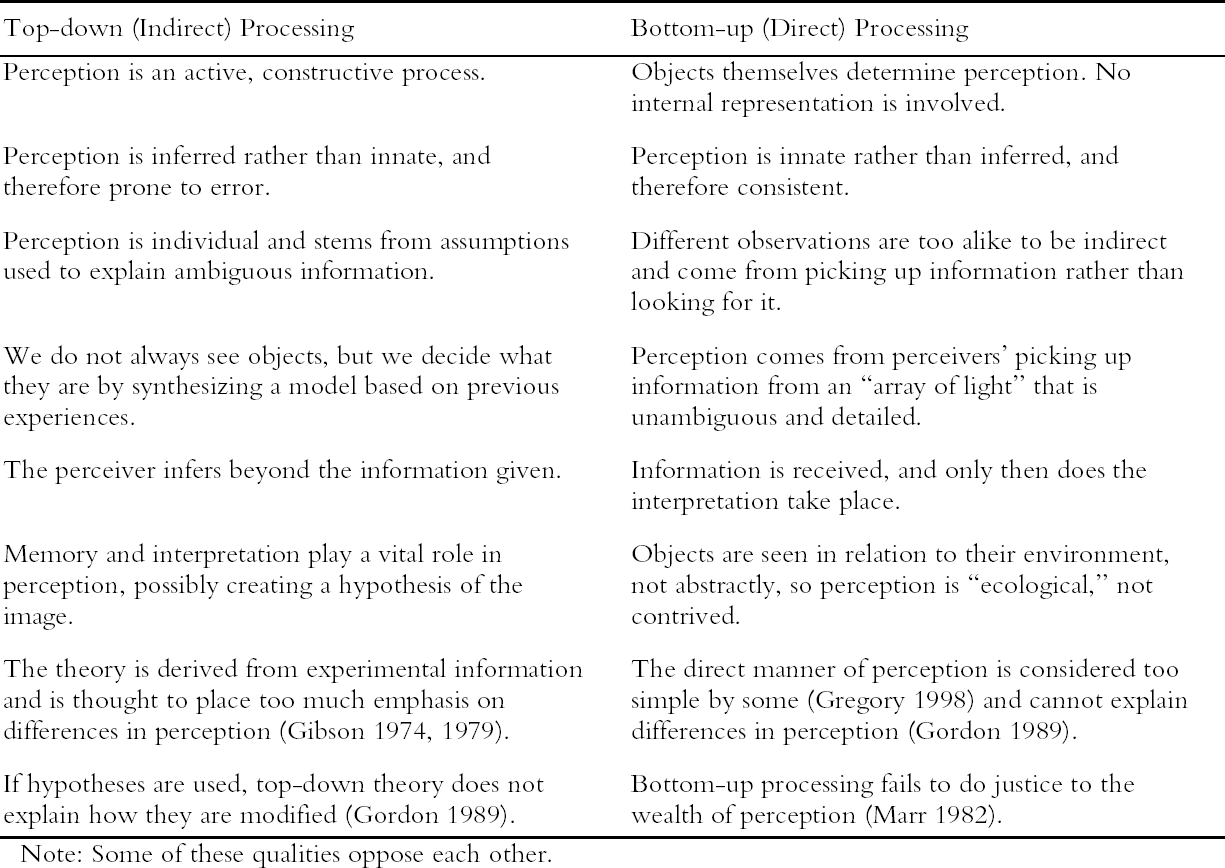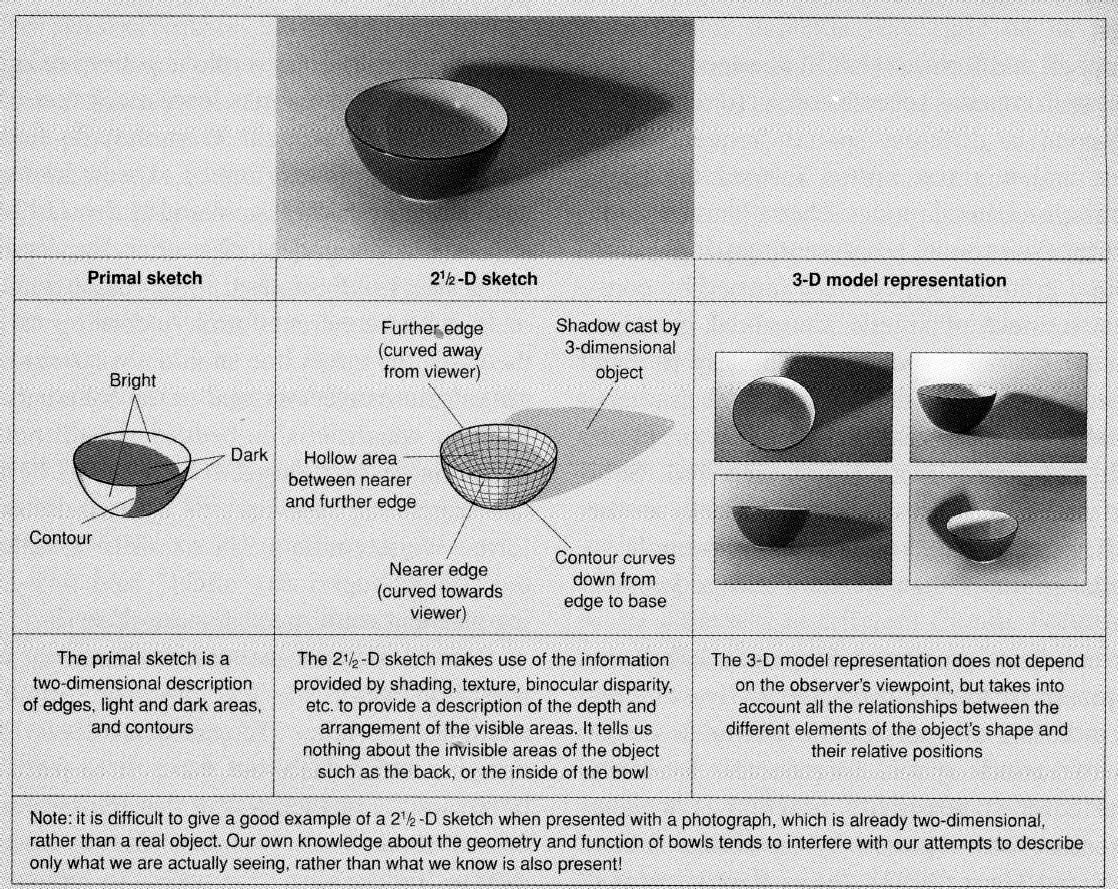AN INTEGRATED APPROACH TO RISK ASSESSMENTS AND CONDITION SURVEYSJOEL TAYLOR
5 THEORETICAL INTEGRATIONIt is clear that every perceptual situation requires an element of both types of processing, the proportion differing in each situation. Everyday navigation requires more bottom-up processing, whereas representing concepts requires more top-down processing. Risk assessments and condition surveys involve both, although risk assessment focuses on top-down expectation, and condition surveys on bottom-up observation. Each has advantages and drawbacks. Neisser (1976) offered an example of how the two theories can be satisfied in his analysis-by-synthesis model (fig. 4). He claims that people do not see their retinal images but see with the aid of them (Neisser 1968). For each perceptual task, perceivers choose relevant information from all the information available. The constantly changing environment around us is an example of the need to select appropriate information rather than to perceive all elements of an extremely complex environment with equal importance. Hypotheses about the perceived objects are continually updated with new information, which is stored to increase accuracy of future perceptions. This process is much like risk assessment being refined by perceptual exploration based on theoretical understanding. What is brought to the perceptual act is a “schema,” internal to the perceiver (Neisser 1976), which is used to receive or organize expected information (Best 1995), although not necessarily at a conscious level. The “schema” is conceptual knowledge, such as object deterioration, that is built up from the empirical information in an environment, such as collection condition. According to Neisser, “neither perception nor memory is a copying process” (italics in original) (Neisser 1968, 252). The difference between human perception and conservation assessments is that perception, according to Neisser (1976), is a dynamic process that is constantly updated, whereas conservation assessments are sequential, linear processes often used as “snapshots.”
Such a model is not appropriate for assessments carried out infrequently, but the advantages of a cyclical process, in which visible consequences can refine perceptions through organizing relevant information, is a useful analog for preventive conservation. The creation of a system in which expectations and observations can be assessed in light of each other pinpoints discrepancies, which creates a sharper assessment. Marr (1982) has offered an influential theory by which perception is constructed through three autonomous stages that build up and increase in detail (fig. 5). Marr provides an explanation of perception at a local level that accounts for the richness of our perceptual worlds, and also for the differences in representation between different people. Marr's approach has the interesting quality that different elements of perception are separate processes, but linked by a central system that “constructs” the representation. As a sequential process that is dynamic and incorporates top-down and bottom–up processes, there are elements that are beneficial to conservation assessments. The build-up of visual detail from initial sketches means that the percept increases in depth. Each action involves a different, more detailed level of information from which a percept can be created (table 3). Criticisms of Marr's (1982) approach are that he has not placed enough emphasis on the variation with perception. This variation would ideally be absent, or at least subdued, in any conservation assessment process, but it is a problem that affects conservation assessments nonetheless. The constructive
While Marr's (1982) process is fundamentally bottom-up (table 3), the knowledge of the perceiver, or conservator, is required to construct the assessment and apply the theoretical framework of object damage that is used to interpret this information. The assessment of risk is based on the knowledge of what to look for, and essentially it is a top-down process. It requires much more interpretation than simply object recognition. Marr's autonomous stages of perception, linked by a central function, illustrate how assessments can be integrated and independent of each other. If conservation assessment methods are to be complementary, a degree of mutual independence is required. Otherwise, one process can be used to “prove” the efficacy of the other. Basing a condition survey on the results of a risk assessment, or vice versa, may lead to a false confirmation of findings. The possibility of a conservator's pursuing a certain line can be extended by the reinforcement of a belief through the accumulation of confirmatory evidence. The correlative nature of surveys makes this a real problem because the accumulation of confirmatory evidence will increase this effect (Wason 1960, 1996; Evans 1989).
Risk assessments and condition surveys focus on interpretation in a number of ways, such as the symptoms of damage denoting condition, condition denoting deterioration, or deterioration denoting exposure to hazards. The concepts here are more subtle and ambiguous than object recognition. They require an understanding and interpretation of what the stimuli mean, not just recognition of what they are. This level of understanding requires the addition of knowledge from the perceiver—a top-down process of interpretation. When determining the problems of a collection from conservation assessment records rather than the environment itself, these problems are highlighted. The more information-rich processes are removed, and collected data lose the contextual information. |




